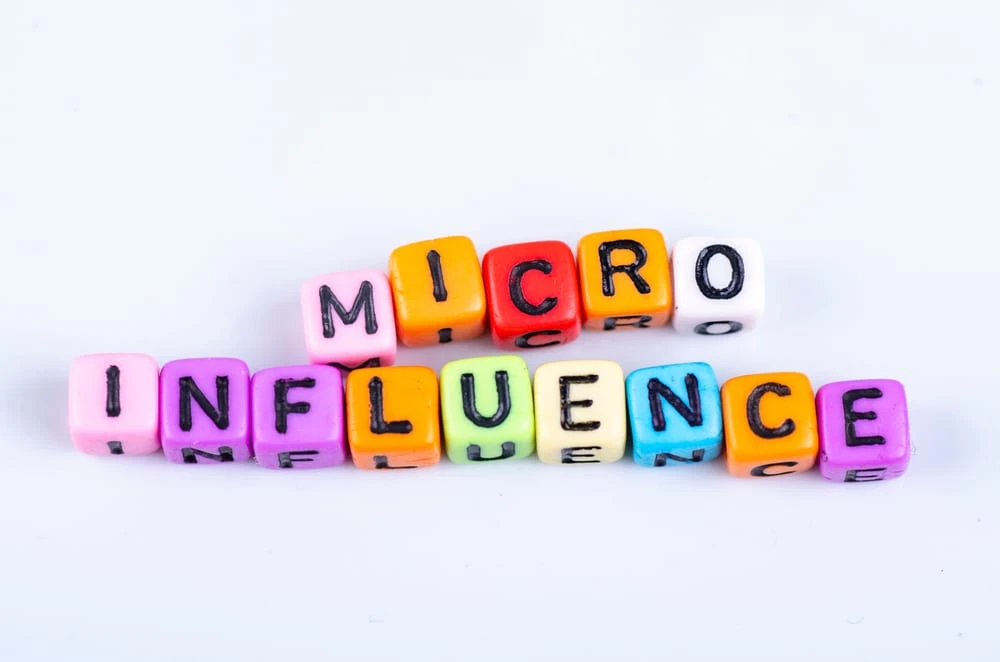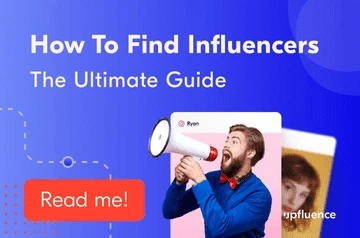The early days of influencer marketing were about partnering with big-name celebrities who had a huge social media following to match their global visibility. No one had ever heard of micro-influencer marketing. But nowadays these types of partnerships are no longer the norm for influencer marketing campaigns. Working with the likes of Selena Gomez, Kim Kardashian, or Charli D’Amelio is reserved for brands that are household names. The mega reach of these influencers comes with a price tag!
There are now more types of social media creators than ever before! Influencer types have diversified to include influencers with small tight-knit communities who share a common interest. The popularity of micro-influencer marketing is on the rise because while they may have a ‘micro’ audience, this doesn’t mean they can’t have a mega impact on your business. In fact, it’s their smaller audience that serves them so well. Micro-influencers have cultivated online audiences who are highly engaged in their industry-specific content that’s created around a certain niche.
Let’s explore why micro-influencers have become an incredibly popular influencer category to work with. You’ll understand the key benefits of partnering with them. They are more accessible, more affordable, boast high engagement rates, and can help you target niche audiences. What are you waiting for? Find out how micro-influencer marketing can transform your business!
Why work with a micro-influencer?
Brands should work with micro-influencers because they have built active and engaged audiences around their niche. They help brands to target specific audiences within their industry, and increase social engagement. Micro-influencers are experts and enthusiasts in their chosen topic area, meaning the their followers look to them for product recommendations. This makes them the perfect candidates for brand collaborations. With their smaller audiences, they are also more affordable than working with social media mega-stars.
Who are micro-influencers?
First things first, these influencers are not the Kylie Jenners of the world, they don’t have millions of followers. The exact number of followers a creator needs to be considered a micro-influencer varies, but at Upfluence, we consider micro-influencers to have between 5K to 20K followers. Nano-influencers have between 1k – 5k followers, whereas anything above 20K takes you into mid-size and rising star influencer territory.
Micro-influencers might not be the first people you think of when you think of the word “influencer”. They are people you might see every day on your way to work, at school, or you might even know a few. They look just like us – which is great news for marketers.
We like and trust people who are similar to us. In fact, marketers know that 93% of people trust their family and friends for recommendations more than other sources of information such as advertising. Micro-influencers hold a very similar power to this – and they can transform your business’ influencer marketing campaigns in massive ways.

Micro-influencers are more accessible
Although it might be easier to find macro-influencers and celebrities, they can be harder to connect with. Most larger influencers tend to have managers or agencies to manage their brand collaborations. They usually have very tight content schedules, or only work with certain brands due and might be bound by exclusivity clauses in their current contracts.
Micro-influencers, on the other hand, are much more accessible – but that doesn’t mean they are any less professional. This simply means that you’re more likely to be able to reach out directly to the person who you’ll be working with. Micro-influencers who are open to collaborations will usually make it easy for you to contact them. Using a tool such as Upfluence’s Chrome plugin will provide you with the contact details of your chosen influencers so you can begin outreach right away! Then you can directly discuss the nitty-gritty details like scheduling, handling, or payment on a much more personalized level.
This not only saves you time and resources, but also helps you establish a much stronger relationship with the influencer from the get-go, and have a much deeper understanding of the influencers who will represent your brand and products.
Micro-influencers are more affordable
This might seem obvious, but it’s easy to forget that smaller influencers are likely to charge less than macro-influencers or celebrities. There is unlikely to be an agency fee, and the influencers will likely be more open to negotiation instead of imposing a flat rate for their services. According to Bloglovin, 84% of micro-influencers charge less than $250 per post. However, this number can vary greatly depending on the type of collaboration, the influencer’s industry, their location, their engagement rate, etc.
No matter what the number is, it is much lower than the amount a macro influencer typically asks for, which can be in the thousand-dollars-and-upwards range. This discrepancy is not only because of the difference in the following sizes but also due to the volume of brand collaboration requests they’re likely to receive from larger brands that are willing to pay a much higher price.
But don’t be disheartened if you don’t have a budget for any influencer payment at all. Product seeding campaigns are a great way to work with micro-influencers, who might be receptive to exchanging products for posts. By offering free products, discounted products, or product bundles for a giveaway you can offer value to the micro-influencer and their audience so it’s a win-win! Read more about your brand value propositions in our Product vs. Payment article!
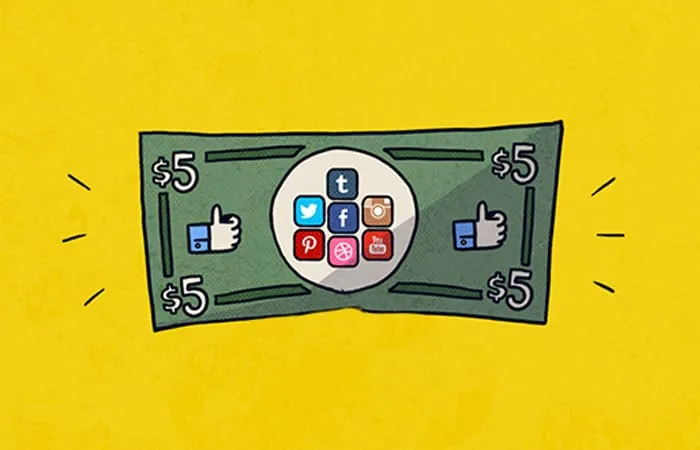
Micro-influencers have higher engagement
It’s not coincidental that smaller influencers tend to have higher engagement rates. Just like how you tend to have a deeper relationship with your small friend group, compared to a room full of people – influencers on social media are the same.
Influencer Marketing Hub’s State of Influencer Marketing Benchmark Report, based on Upfluence’s data revealed that micro-influencers consistently outperform other influencer categories in terms of engagement rate on Instagram, YouTube, and TikTok.
Factors such as engagement rate, saturation rate, percentage of real followers, and post effectiveness are becoming more important when choosing influencers. Brands should no longer focus on follower numbers and instead look at the influencer’s performance. Micro-influencers with their carefully built audiences are far more likely to tick boxes such as high engagement rate, high real follower count, etc. (Hint: Upfluence doesn’t only show you every influencer’s engagement rate, but you can also define the engagement rate as a filter while searching for influencers ? )
Here’s an example of the in-depth performance insights you can see for micro-influencers in our database:
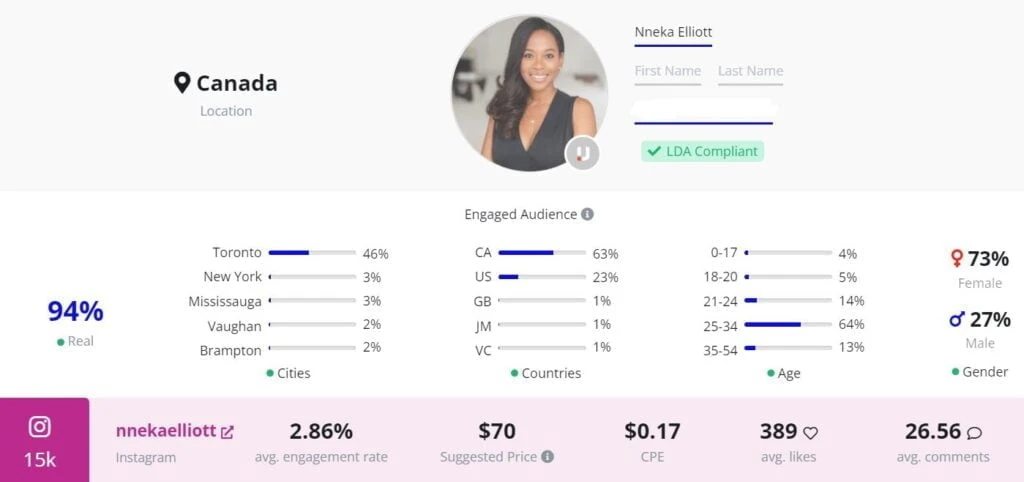
Reach niche audiences
Micro-influencers create active social media communities around a specific interest. This means that once you’ve found a micro-influencer who’s aligned with your niche and values you can effectively target and convert people who fit your target customer base. If you’re a company that sells cooking appliances then you might team up with baking influencers to promote your new bread maker. Or you might work with a ‘momfluencer’ who posts about time-saving recipes for kids to do an unboxing of your new blender. Think about all the different strands of your target audience and what kind of niche micro-influencer is best suited to promoting each particular product.
Untapped opportunities for micro-influencer marketing
In the Upfluence database alone, there are 2.3M influencers with less than 15,000 Instagram followers. This group of influencers spans hundreds of industries, and it’s an ever-growing influencer group. This offers brands and marketers a huge, untapped land of opportunities for collaboration with micro-content creators.
We mentioned earlier that micro-influencers are cost-effective. This means that instead of limiting yourself to a big macro-influencer payment, you can use that budget and time to utilize 10 or 100 times as many micro-influencers to work with, in various campaigns.
A good strategy for micro-influencer marketing is to work with several creators at once instead of one ‘catch-all’ influencer. This way your product is far more likely to resonate with your influencers’ audience and ultimately lead to more conversions.

Micro-influencers are easier to find than ever
Because there are so many influencers across different niches, manually searching on Instagram for the right one can be tedious, time-consuming, and fruitless. Imagine having the task to find 500 niche influencers who:
- Have between 7k and 12k followers
- Engagement rate over 3%
- Located in Miami
- Industry: Organic skincare
- Gender: Female
- Audience: At least 60% female
It can take weeks to manually source these influencers, not to mention that you won’t have easy access to audience data. However, software like Upfluence can easily pinpoint these exact influencers and show them to you within seconds. This way, you truly have the power to focus on reaching out, building influencer relationships, and working on campaigns, instead of searching, searching, and more searching.
Micro-influencer recruitment doesn’t stop there. The reality is that you probably have micro-influencers already in your customer database, but you just don’t know about them. Connecting your databases to Upfluence (using our integrations with Shopify, WooCommerce, Klaviro & more) allows you to analyze your customer’s social reach and purchase history in minutes to identify your influential customers who already love your brand! Create cohorts of brand advocates, nano influencers, and micro influencers who are already part of your brand community to start activating them for your brand. What’s more, organic influencers are 7x more likely to accept a free collaboration.
Examples of brands that leverage micro-influencers:
Glossier
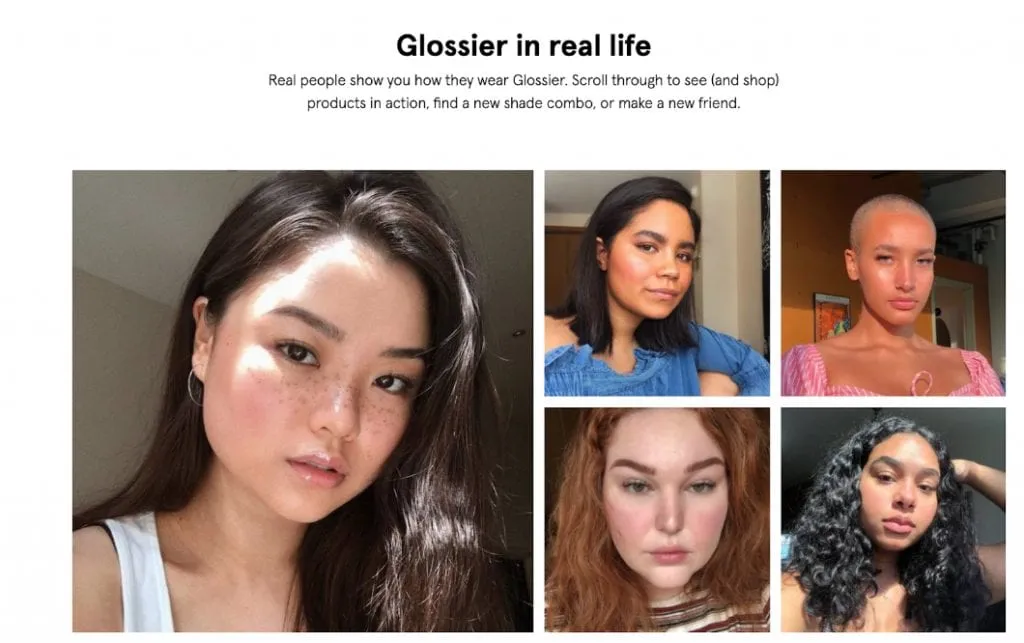
Glossier, a beauty company, has worked with many influencers with various follower numbers, especially micro and nano-influencers. As their messaging focuses on beauty being accessible to everyone, the diversity of their influencer representation has brought them incredible successes.
Daniel Wellington
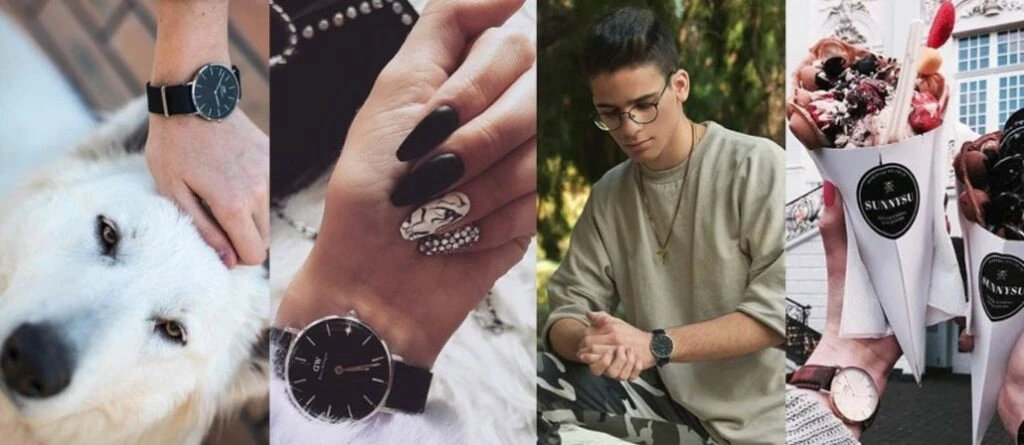
Daniel Wellington has partnered with many influencers ranging from a micro level to celebrities. This way, they can target influencers and audiences in different niches, with different styles, and in different countries.
Bumble

Bumble, an online dating app, leverages micro-influencers in many different ways. They frequently have brand parties where micro-influencers and prospective users can join. Bumble capitalizes on social sentiment using it to position itself as a young, hip brand catered to the youth.
Have we convinced you to start recruiting micro-influencers for your next campaign? Get prepared for your influencer search with How to Find Influencers – The Complete Guide.
